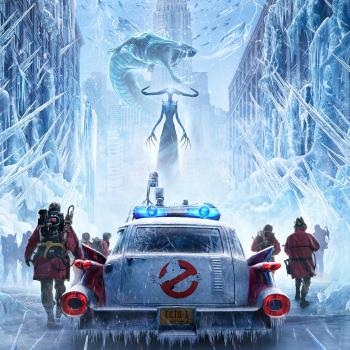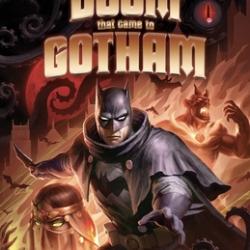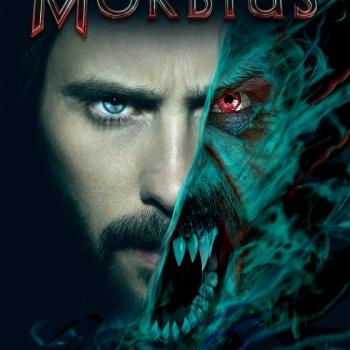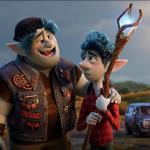Review of Beasts of the Southern Wild, Directed by Benh Zeitlin
By KENDRICK KUO
Beasts of the Southern Wild has taken top prizes at Sundance and Cannes and has now racked up nominations at the Oscars. The talk of the town is Quvenzhané Wallis. A six year old at the time of filming, and now eight, the young actress plays Hushpuppy, a girl who lives with her father, Wink, in a Louisiana bayou town. The town is dubbed The Bathtub and is a fictionalized, self-enclosed village, separated from the modern world by a levee. In their solipsistic existence, the residents of The Bathtub live life fishing, drinking, and having a good time, living in houses constructed from debris and waste, perfectly content to live day-to-day without the complexities (or ugliness?) of contemporary society.
Hushpuppy wants to be a man. Or at least wants to be her father; or at least that’s what her father wants. This is to prepare her for the uncertain future ahead of her as Wink is slowly wasting away from a health condition. Hushpuppy screams ferociously to assert herself, tries to belch like a grown man who’s had too much beer, and is not afraid to punch Wink.
The Bathtub’s children all go to a small school taught by Miss Bathsheba, who tells them about the village’s folk religion about the Aurochs–these large prehistoric, tusked hogs that are preserved in the arctic ice–and how they may be released due to the melting ice caps. As the film progresses, the Aurochs break free of their cold bondage and rush toward The Bathtub as a hurricane begins to form. The hurricane’s course trajectory includes The Bathtub, but the residents refuse to evacuate.
I will leave the rest of the story for you to find out for yourself on your home televisions. Beasts of the Southern Wild is one of those films you can’t get out of your head because of its sheer ingenuity and novelty. In many ways, it’s sui generis in the world it creates in Louisiana. With magical realism that will remind viewers of Gabriel Garcia Marquez’s novels, Hushpuppy has what A. O. Scott has called “juvenile narcissism” at the New York Times. It is through this lens of juvenile narcissism that the whole movie is cast. The Auorchs, the magical world of The Bathtub, the desire to be a grown man that can take on the world–these are building blocks of a Hushpuppy-centric world. Beyond this, there isn’t much of an anchor to the story other than her relationship with Wink, her father. The rest of the narrative swirls around them almost spasmodically in a most charming fashion.
Reviews of Beasts of the Southern Wild have been divided, with most praising it, while a significant minority have found it uninteresting both in its storyline and its character development. I am personally torn about how to react to the film, and would say that it’s a film of art that is to be savored and appreciated, more than to be enjoyed. I would not watch it again for its entertainment value. I think audiences are more engrossed by the world of The Bathtub as strange and curious, rather than attached to the characters or intrigued by the plotline.
As with many films, we can read into the symbols the director has provided us with. Is the hurricane and the melting ice caps a platform for an environmentalist message? Are the Aurochs a personification of Hushpuppy’s coming-of-age as a frightening prospect? How much of the film is a commentary on Hurricane Katrina and the government’s response (there is a mandatory evacuation imposed on The Bathtub by a government agency)? All these are discussion points raised by Beasts of the Southern Wild, but I personally found the tension between youth and maturity, embodied in Hushpuppy, to be the most compelling theme.
Hushpuppy is a young girl that’s expected to act as a grown up, but what her father teaches her about being mature fall along the lines of being bold and acting like a man (burping, drinking, feeding yourself). These ideals derive from Wink’s overarching goal of making Hushpuppy fit for survival after his imminent death. I’m not making a judgment call as to the morality of the film, but merely pointing out the reason for the fascination with Hushpuppy and how it drives the movie. Within our psyches, there’s an attraction to coming-of-age stories, where children confront the “real world” and become adults as they adapt to it. Hushpuppy, on the other hand, appears to conquer her fears, not by casting away the magic of her youth, but persisting in her faith in The Bathtub world and its surrealism.
So what exactly are the beasts of the southern wild? I haven’t actually read anywhere anyone addressing this question. I’m inclined to say that the beasts are the residents of The Bathtub, but the word “beasts” here is not derogatory. Rather, in a Rousseauan turn of phrase, they are the independent, noble savages, who are left untarnished. As a soon-to-be-independent resident of The Bathtub, Hushpuppy is not required to throw off the magical realism of her younger years, but can remain in it as something noble.
Beasts of the Southern Wild is already on DVD and you can watch it on Amazon, rent it from Netflix, or get it from whatever source of cinematic goodness you so desire. I recommend watching it, not for entertainment, but for the art of being transported to another kind of universe.












